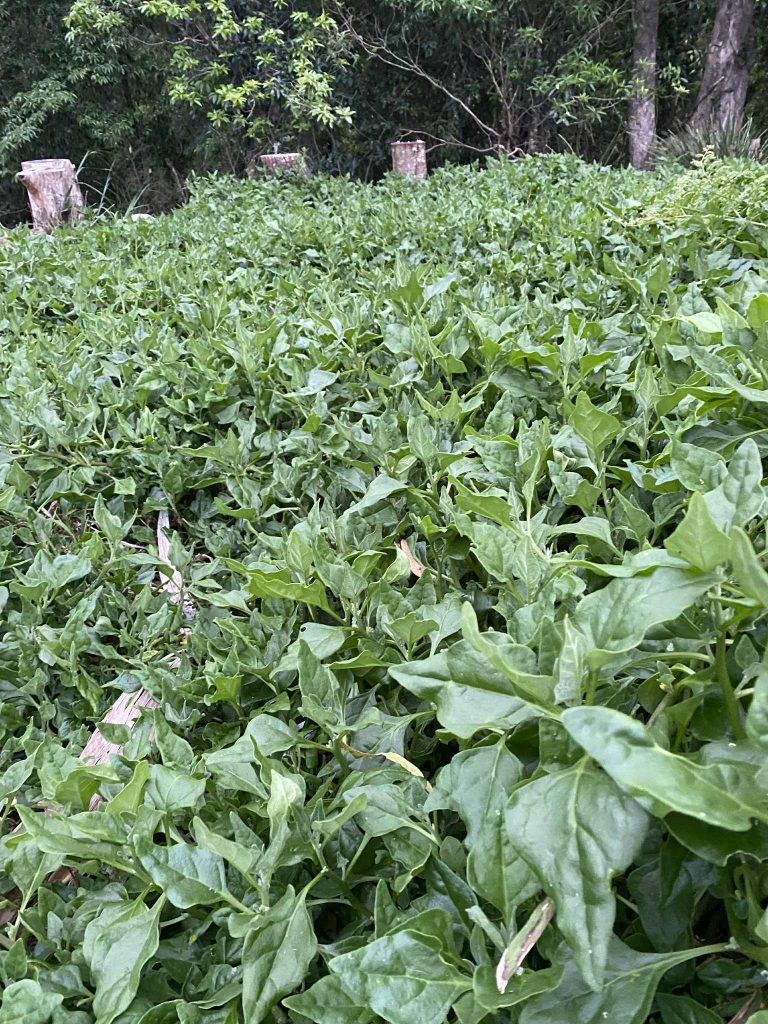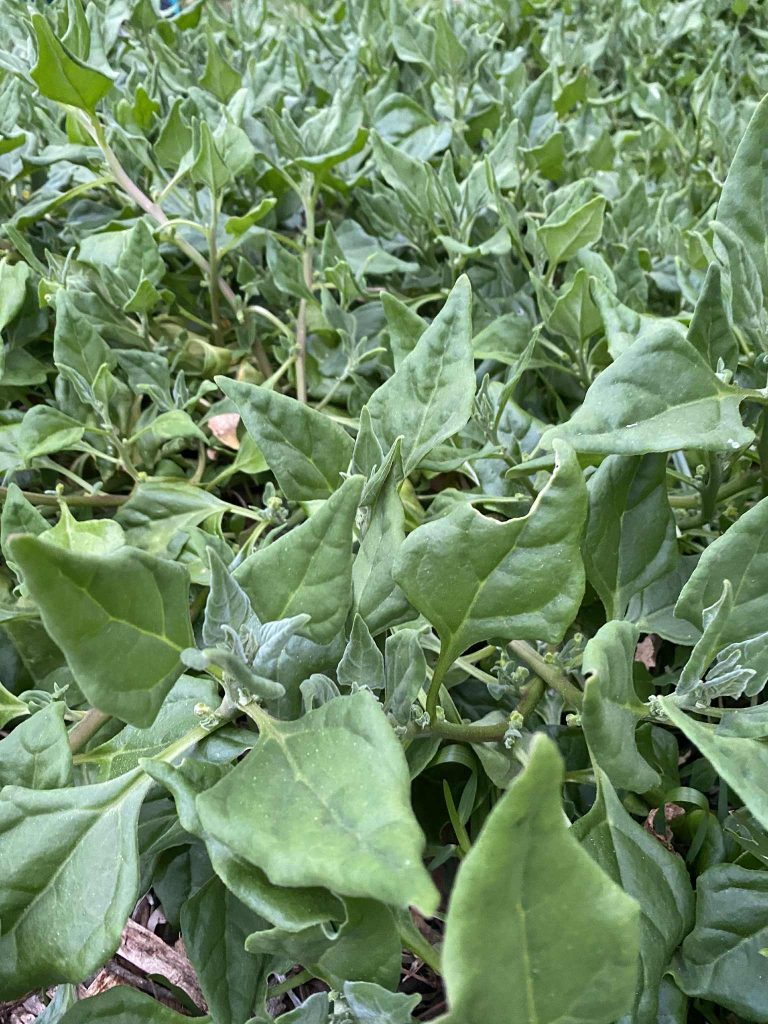Botanical name : Tetragonia tetragonioides
Common name : Warrigal Spinach, New Zealand Spinach, Kokihi (Maori), Warragul (and other phonetic spellings)
Easy for seed saving
Lifecycle: Perennial or annual in frosty areas
Pollination: self-pollinating
Mating system: perfect self-fertile flowers
Suggested spacing: Same as for eating production
Seed specific requirements: none
Isolation distance: none
Population size: unknown
Seed maturity: seeds are mature when the horned capsule containing them turns brown
Processing method: Dry process
Expected seed viability: 5 years
Images



Growing for seed
As there are no named varieties of Warrigal Greens there is no isolation distance or selection criteria needed to keep a line true-to-type. Warrigal Greens are generally allowed to sprawl across their growing space and simply harvested for greens when required.
Harvest
Seed is ready to harvest when the capsules in the leaf axils turn brown. They do this continuously over the growing season. Capsules, with the seed they contain, are dropped from the plant soon after they are mature.
Small quantities of seed can be harvested by hand by picking off any brown capsules that can be found. Large seed harvests can be conveniently managed by moving the green runners onto a tarp. Either leave the plant in the ground and let it continue to grow and drop seed onto the tarp or simply cut and place whole plants onto a tarp and leave them to dry in a protected location.
Processing
If plant material has been moved onto a tarp then mature seed will collect on the tarp within a week. At which point the plant material can be shaken to dislodge any remaining mature seeds and removed leaving the desired seed on the tarp.
Winnowing may be required to remove any unwanted debris.
Uses
Native greens used like spinach. Select the young tender leaves for use in salads. Leaves, particularly older leaves, contain oxalic acid which can be leached out by blanching in hot water.
Contributors
Liz Worth, Lloyd Sharp, Nellie Pryke
